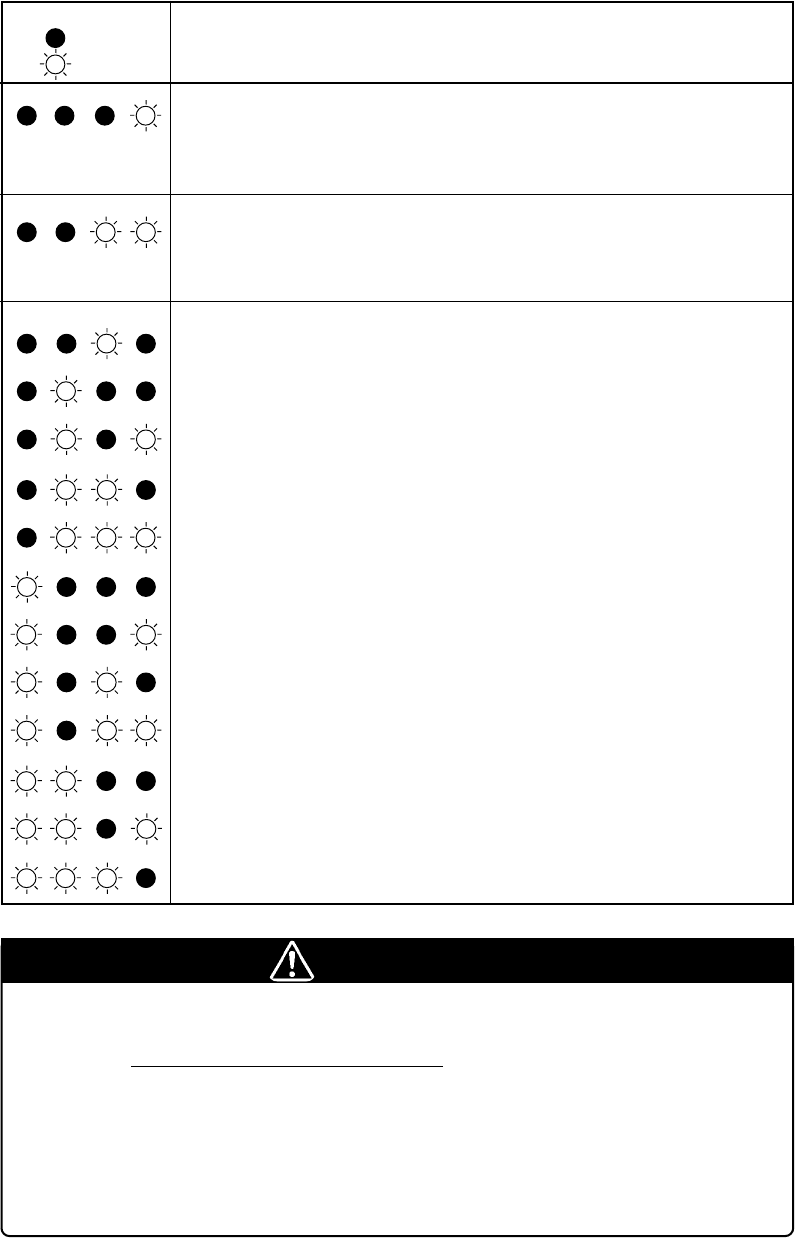
( 45 / 52 )
CAUTION
Notes on Self-checks:
• Be sure to disconnect the target system before executing self-checks.
• If self-checks do not result normally, the emulator may be damaged. Then, contact
your local distributor.
• When an oscillator installed in the emulator is changed to the oscillator of 16 MHz,
self-checks may not terminate normally. Use the oscillator of 10 MHz when
executing self-checks.
(2) If an Error is Detected in Self-checks
Table 5.5 lists how to remedy the troubles if the target status LED display is abnormal in self-checks.
When an error is detected, shut off the power of the emulator and the target system and follow the
steps in the Table 5.5. Then, reactivate the power of the emulator and the target system.
Table 5.5 Error display in self-checks and how to remedy it
LED display
Checkpoint
Emulator does not work properly.
- Check power is being supplied to the emulator.
- If power is being supplied to the emulator, the emulator may be damaged.
Report the LED status to your local distributor.
Emulator does not work properly.
- Check JP1 (MCU power supply selection jumper) is set to INT side.
- If JP1 is set to INT side, the emulator may be damaged. Report the LED status
to your local distributor.
Emulator does not work properly.
- The emulator may be damaged. Report the LED status to your local distributor.
POWER CLOCK RESET RUN
: OFF
: Blinking
POWER CLOCK RESET RUN
POWER CLOCK RESET RUN
POWER CLOCK RESET RUN
POWER CLOCK RESET RUN
POWER CLOCK RESET RUN
POWER CLOCK RESET RUN
POWER CLOCK RESET RUN
POWER CLOCK RESET RUN
POWER CLOCK RESET RUN
POWER CLOCK RESET RUN
POWER CLOCK RESET RUN
POWER CLOCK RESET RUN
POWER CLOCK RESET RUN


















